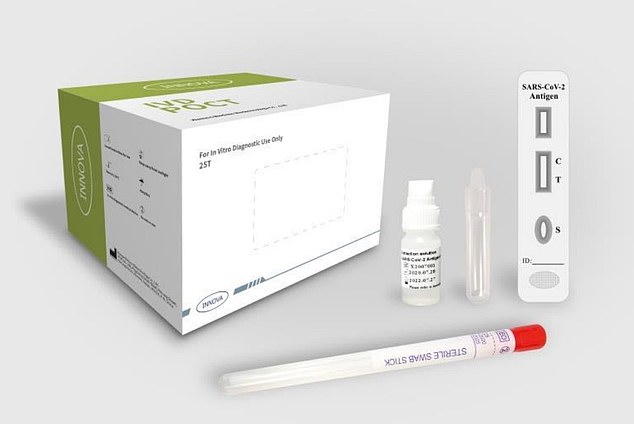Our Longstanding View Is Proven Right (Again).
We first raised a concern about the use of nucleic acid testing, also known as PCR or RT-PCR, on 19th March 2020. Over eleven months ago, we observed;
“Testing for whether an individual has the virus – so-called nucleic acid or RT-PCR testing – is largely pointless. The virus may have been contracted previously – weeks or potentially months earlier – and simply be present as the individual is ‘asymptomatic’, as are many individuals who test positive. Dead virus cells as well as humoral viral debris may be present and thereby provide a false positive.”
We then explained the three main types of testing – nucleic acid; antigen and antibody – in August and expanded upon the fallacy of relying upon nucleic acid testing in September. In August, the health secretary stated that testing was “vital to stop the spread of coronavirus”. This is not true.
Backward-looking, vague and inaccurate testing solely to indicate where infection might have been in the past does nothing to stop the spread of SARS-CoV-2 in the future. The situation from August to date shows just how incorrect the health secretary was in making such an incorrect statement.
It is therefore noteworthy to read two articles published recently, which reinforce the position and validate our view. The first appeared in The Lancet last month and the full article can be read here. It highlights the vulnerability inherent in cycling and amplification, a factor compounded by coronaviruses’ high rate of nucleotide indels and SNPs, as we explained here. This is why S-Voc/N501Y is also known as Sgene Target Failure or Sgene dropout because it isn’t picked up in PCR tests 27.7% of the time [Kidd et al, 2020].
PCR Testing Still Doesn’t Work.
The Lancet article highlights;
“Fragments of RNA can linger for weeks after infectious virus has been cleared, often in people without symptoms or known exposures.“ – This would produce a false positive.
“However, for public health measures, another approach is needed. Testing to help slow the spread of SARS-CoV-2 asks not whether someone has RNA in their nose from earlier infection, but whether they are infectious today.” – Once again showing that the health secretary was wrong.
“Once SARS-CoV-2 replication has been controlled by the immune system, RNA levels detectable by PCR on respiratory secretions fall to very low levels when individuals are much less likely to infect others.” – From day one we highlighted that the innate immune response is more than able to deal with infection in 99.6% of cases.
“The remaining RNA copies can take weeks, or occasionally months to clear, during which time PCR remains positive” – So false positives are produced for months after viral clearance.
“It is a net loss to the health, social, and economic wellbeing of communities if post-infectious individuals test positive and isolate for 10 days. In our view, current PCR testing is therefore not the appropriate gold standard for evaluating a SARS-CoV-2 public health test.” – Our view for the past eleven months, centred upon PCR testing being effectively useless and not a measure upon which to base any decision-making.
‘Tried And Tested’ Is Really ‘Tried And Missed It’.
The article in the British Medical Journal focuses upon another antigen testing and the use of lateral flow assay tests. The article discusses the efficacy of the Innova LFA test kit, one of those kits championed by the health secretary.

Courtesty of Innova Tried and Tested.
In real world – as opposed to sciency fiction factory of NHS propaganda – applications, it is hopelessly inaccurate. The article, which can be read in full here, highlights;
“In the Liverpool pilot study, 60% of infected symptomless people went undetected, including 33% of those with high viral loads.” – Viral load is the key factor with SARS-CoV-2. This shocking level of inaccuracy missed the government, which said the test “helped to significantly reduce prevalence“. Yes, by failing to spot it.
This did not stop the health secretary from denying that a 60% error rate meant the test was ineffective.
“Among students in Birmingham, only 3% of those who would have tested positive on PCR were detected.” – When you know how ineffective PCR testing is, you realise just how bad the 3% is.
“Low test accuracy would be less dangerous if people being tested and the public at large received accurate information about the risks and implications of a false negative result. Instead they are being misled. Results from government studies have been selectively reported and some have not been reported at all. Letters to schools and parents have wrongly stated that the Innova tests were ‘as accurate in identifying a case as a PCR test.’” – Once again, Matt Hancock and Chris Witty are repeatedly unable to tell the truth.
Testing Looks In The Wrong Direction.
Thankfully the BMJ article led to a change in implementation but had the authors not been so vocal and persistent in making fact-based observations and telling the truth, the charade that is government strategy and government & NHS response would not have changed.
Mass testing is ineffective, serves no purpose and provides obsolete data.
It is a smokescreen, government and NHS sleight-of-hand, to distract attention from the tens of thousands of unnecessary deaths caused by Matt Hancock and Chris Witty, as well as ignoring the misery, hardship and pain inflicted upon tens of millions of people by government strategy and government & NHS response.
All for a lineage B betacoronavirus that continues to resemble common-cold causing lineage A betacoronavirus HCoV-OC43, still in our view its most recent common ancestor.

Do not panic. Do not worry. Do not follow government advice.